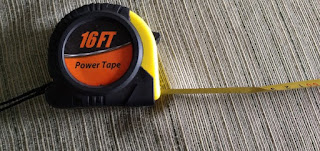Always take the ceramic cachepot
A few types of freestyle items are almost ALWAYS useful. These almost-always-useful items include metal wire shelving (preferably with shelf clips), picture frames with front glazing intact, and ceramic cachepots and planters (cachepots do NOT have a drainage hole in the bottom, planters generally do have a drainage hole, but sometimes the words are used interchangeably just for extra uncertainty). I say that cachepots and planters are almost-always-useful items because I do a lot of container gardening, and having spare pots makes it easy to split plants and give them away. So when I saw this intact ceramic cachepot, you can guess what my reaction was.....take it!
 |
| Woodsy ceramic cachepot |
Now, I know what you might be thinking -- this cachepot featuring faux bark with birds and flower detail looks a bit faded. The birds might have been painted at one point, you can see a little trace of red on the neck of the leftmost cardinal, and there was a bit of yellow left on the bottom of the flower, but the paint on those details had mostly worn off. I offered it to a few friends, thinking someone might light the vintage charm of it, but no one was interested in the woodland themed cachepot. Since the brown color didn't really fit into my white cachepot color scheme I decided to do a quick makeover with white satin spray paint.
Cachepot makeover
I didn't use any sort of primer when spray painting this ceramic cachepot because I don't expect it to get a lot of handling. I did tape off the inside of the cachepot because the inside already had a shiny white glaze that I didn't want to cover. I setup a little spray station in the basement and gave a few coats with the suggested drying times in between. With all the nooks and crannies of the faux bois texture and the bird/flower detail it was important to spray in different directions to get full coverage. The final result is below, after about 2 - 3 coats of satin white on the outside.
 |
| Spray-painted ceramic cachepot |
Here is the cachepot in its current home, holding a Caladium plant (itself a freestyle gift from the sub-tropic garden of some friends). Here it is crowded not-very-prettily with some other plants in a variety of planters - including one made of glass in the back. Good sunlight is at a premium in my apartment, so crowding happens more often than I'd like! If I remember to take a better picture I'll replace this one, but for now that's what I have. :)
 |
| Cachepot with Caladium plant |
A Surprise Online Find After The Spray Paint Makeover
After I'd finished this project I was pleasantly surprised to see a not-too-dissimilar planter to mine for sale on rather stylish website ( not-too-dissimilar if you squint and look at mine in dim light that is). Here is a screen grab of the 'Ceramic Rose Pot' for sale, the large size is 6.5 inches tall - about the same size as my freestyle find.
 |
| https://www.shopterrain.com/ |
Conclusion
The large version of the cachepot on this website sells for $38 - I got mine for the cost of washing a pot and a $5 can of spray paint. Cheers to seeing the makeover potential of that faded ceramic cachepot in the discard pile!
Happy freestyling, or almost freestyling, whichever way your project takes you.












